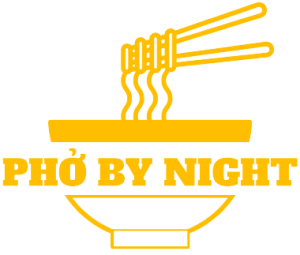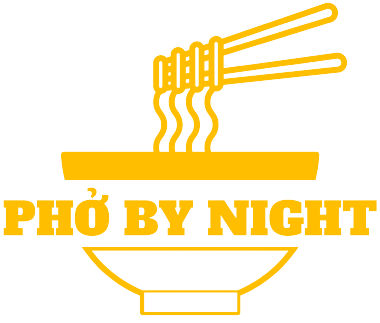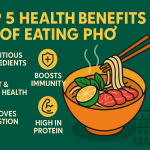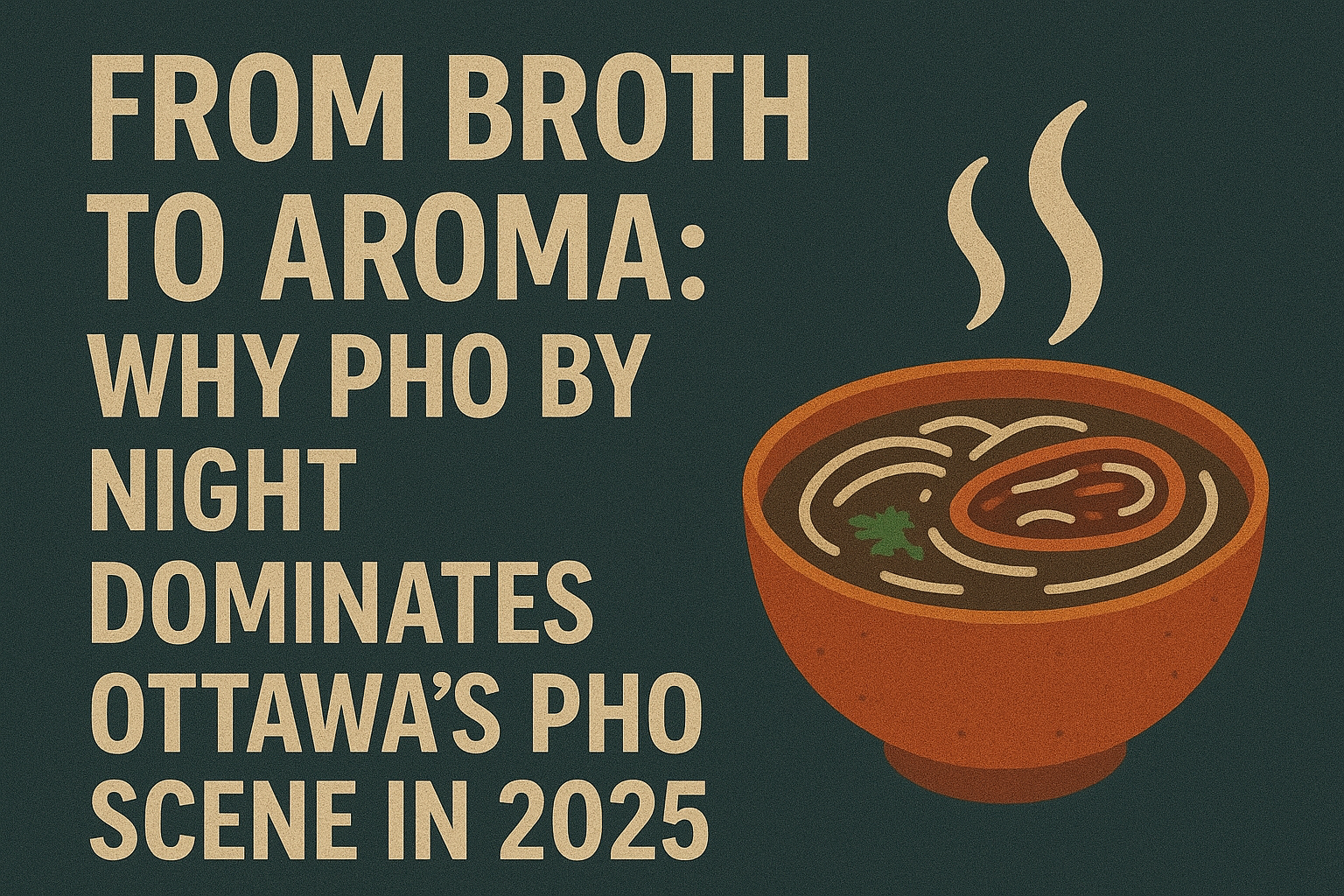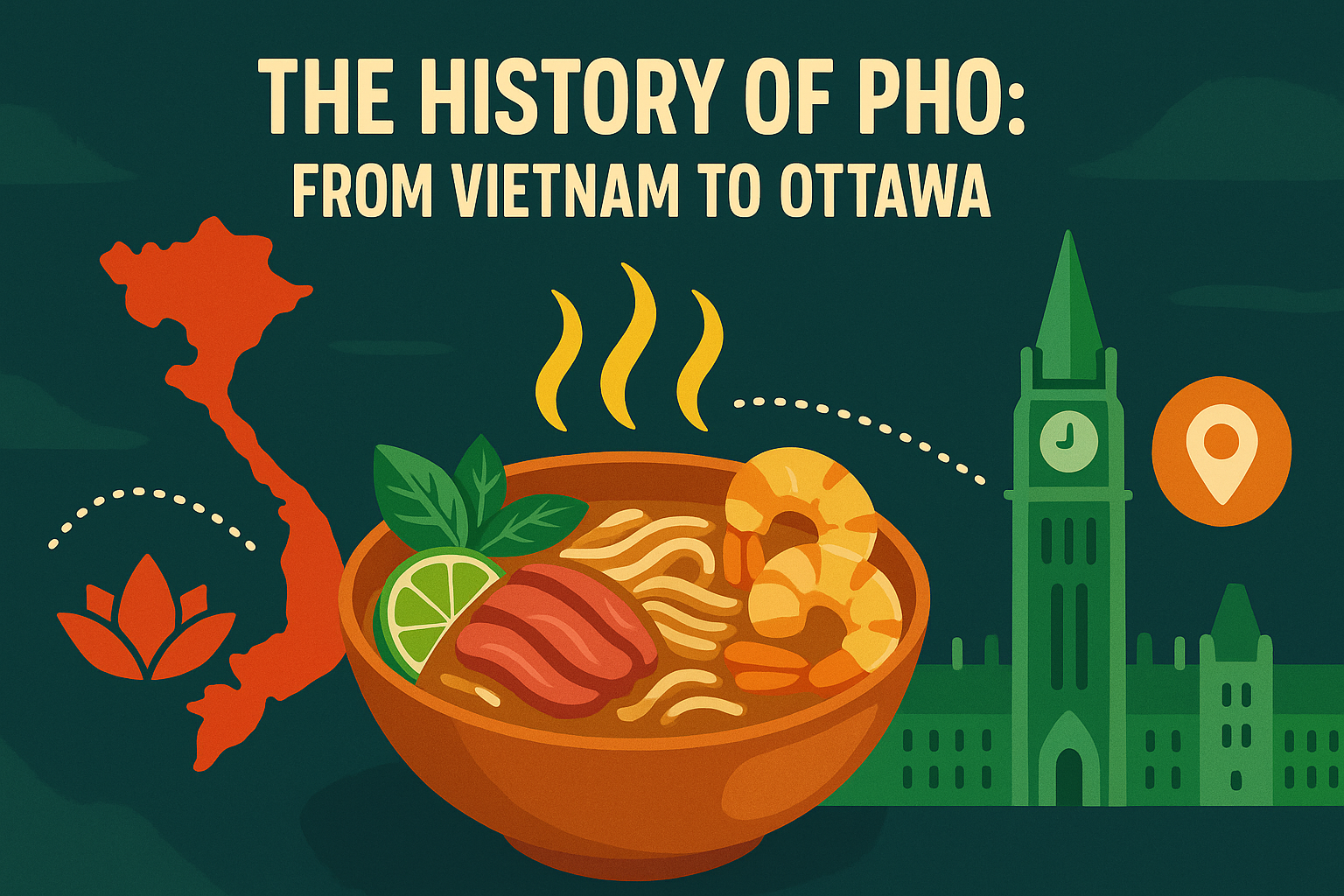
The History of Pho: From Vietnam to Ottawa
Few dishes embody cultural heritage, culinary artistry, and cross-continental influence as profoundly as pho. What began as a modest street food in Vietnam has become a global culinary ambassador, and in Ottawa, pho has found not only a welcoming audience but also a permanent place in the city’s diverse food scene. To understand pho’s rise in Canada’s capital, it is essential to trace its roots in Vietnam, its evolution through migration, and its adaptation to Canadian tastes—all while retaining its authentic soul.
Origins of Pho in Northern Vietnam
Pho is widely believed to have originated in the late 19th or early 20th century in northern Vietnam, particularly around Hanoi. While historians debate its exact birth, the dish is thought to be influenced by both Chinese and French culinary traditions. The use of rice noodles nods to Chinese cuisine, while the emphasis on beef—less common in traditional Vietnamese cooking before French colonization—suggests colonial influence.
The hallmark of pho is its broth: a slow-simmered, aromatic base made from beef bones, charred onion, ginger, and a blend of spices like star anise, cinnamon, and cloves. This broth is paired with flat rice noodles (bánh phở) and thinly sliced beef, creating a warming and nourishing dish ideal for Vietnam’s cooler northern climate.
For a deeper exploration into pho’s original culinary traditions, you can explore this article on exploring the origins of pho.
Southern Vietnam and the Evolution of Pho
As pho traveled south, particularly after Vietnam’s partition in 1954, the dish took on regional variations. Southern pho, especially from Saigon (now Ho Chi Minh City), became known for:
- Sweeter, bolder broth compared to the more subtle northern version.
- A wider variety of garnishes such as bean sprouts, basil, lime, and chili peppers.
- Greater flexibility in protein choices, with chicken and seafood versions emerging alongside beef.
This southern style is often what many Western diners first experience when trying pho, due to its abundant garnishes and customizable flair.
Pho as a Symbol of Vietnamese Identity
Pho became more than food—it evolved into a cultural symbol. For Vietnamese people, pho represents comfort, heritage, and resilience. It is a dish associated with family meals, early morning markets, and communal gatherings.
During the Vietnam War and its aftermath, many Vietnamese refugees carried not only memories of pho but also recipes and techniques, using them to establish restaurants abroad. Pho thus became a culinary bridge, connecting displaced communities to their homeland while introducing global audiences to Vietnamese cuisine.
The Migration of Pho to Canada
Vietnamese immigration to Canada grew significantly after the 1970s. Ottawa, as the nation’s capital, became a destination for many Vietnamese families. Along with their traditions, they brought their cuisine, and pho became central to this culinary exchange.
The first Vietnamese restaurants in Ottawa often served pho as a staple, catering both to the growing Vietnamese community and to curious locals. Over time, pho’s reputation spread. What was once considered “ethnic food” quickly became a beloved part of Ottawa’s multicultural dining identity.
Today, Ottawa boasts numerous Vietnamese restaurants, with Pho By Night standing out as one of the most recognized establishments for authentic pho experiences.
Pho in Ottawa: A Local Perspective
Pho in Ottawa has adapted while still preserving its authenticity. Key trends include:
- Late-night dining culture: Establishments such as Pho By Night have become staples for students, night-shift workers, and foodies seeking comfort food after hours.
- Halal-friendly options: Recognizing Ottawa’s diverse population, many restaurants now offer halal-certified beef and chicken pho to accommodate Muslim diners.
- Seasonal popularity: Although pho is traditionally eaten year-round in Vietnam, in Ottawa, it has become especially popular during harsh winters, serving as a warm and nourishing comfort food.

Cultural Crossroads: Vietnamese Pho and Canadian Tastes
Pho’s success in Ottawa highlights how food adapts while retaining cultural essence. Canadians quickly embraced pho because it aligned with trends toward healthier eating. Pho’s broth is low in fat yet packed with nutrients, especially when based on beef bone broth—a topic explored in the healing powers of beef bone broth.
Pho also resonates with Canada’s multicultural ethos. Just as sushi, curry, and shawarma became mainstream, pho joined the ranks of globally loved foods that reflect Canada’s openness to culinary diversity.
Health Benefits and Dietary Adaptations
Modern health-conscious diners have embraced pho for its:
- Nutritional profile: Protein-rich, hydrating, and mineral-dense.
- Customizability: Easily adapted for gluten-free diets, as explored in is Vietnamese food gluten-free?.
- Vegetarian and vegan options: Increasingly popular in Ottawa, offering alternatives like tofu pho and vegetable broth.
This adaptability has secured pho’s place as a versatile meal, catering to both traditionalists and health-focused eaters.
Pho and Ottawa’s Coffee Culture Connection
Beyond pho itself, Vietnamese dining traditions have introduced Ottawans to Vietnamese coffee. Pairing pho with coffee may seem unusual at first glance, but in Vietnam, it is common to enjoy a rich iced coffee alongside a hot bowl of noodles. This cultural pairing has been highlighted in culinary harmony: pairing Vietnamese coffee with food.
This crossover further enriches Ottawa’s dining landscape, where pho and coffee together symbolize Vietnamese culinary influence.
Pho’s Place in Global Culinary Conversations
Globally, pho has been recognized by major cultural institutions as a food of significance. It has appeared in international food rankings and been the subject of cultural studies. For example, the UNESCO Intangible Cultural Heritage lists acknowledge how dishes like pho embody cultural traditions worth preserving. Similarly, Canada’s government promotes multicultural cuisine as part of its cultural diversity initiatives on Canada.ca.
Such recognition underscores pho’s role not only as a beloved dish but as a cultural ambassador.
The Future of Pho in Ottawa
Looking ahead, pho in Ottawa shows no sign of slowing down. Future trends may include:
- Fusion experiments: Combining pho with Canadian culinary traditions.
- Catering services: From Pho catering ideas to corporate events, pho is becoming a mainstream choice for diverse occasions.
- Health-driven innovation: More vegan, halal, and gluten-free pho options to meet demand.
Pho’s journey from Hanoi street vendors to bustling Ottawa restaurants illustrates a powerful story of cultural migration, adaptation, and culinary triumph.
Conclusion
Pho’s history is one of resilience, migration, and global resonance. From its humble beginnings in northern Vietnam to its widespread embrace in Ottawa, pho has evolved without losing its essence. It is not merely a dish—it is a living tradition, nourishing bodies and connecting cultures.
For those in Ottawa seeking to experience pho at its finest, Pho By Night remains a cornerstone, offering both authenticity and innovation in every bowl.
